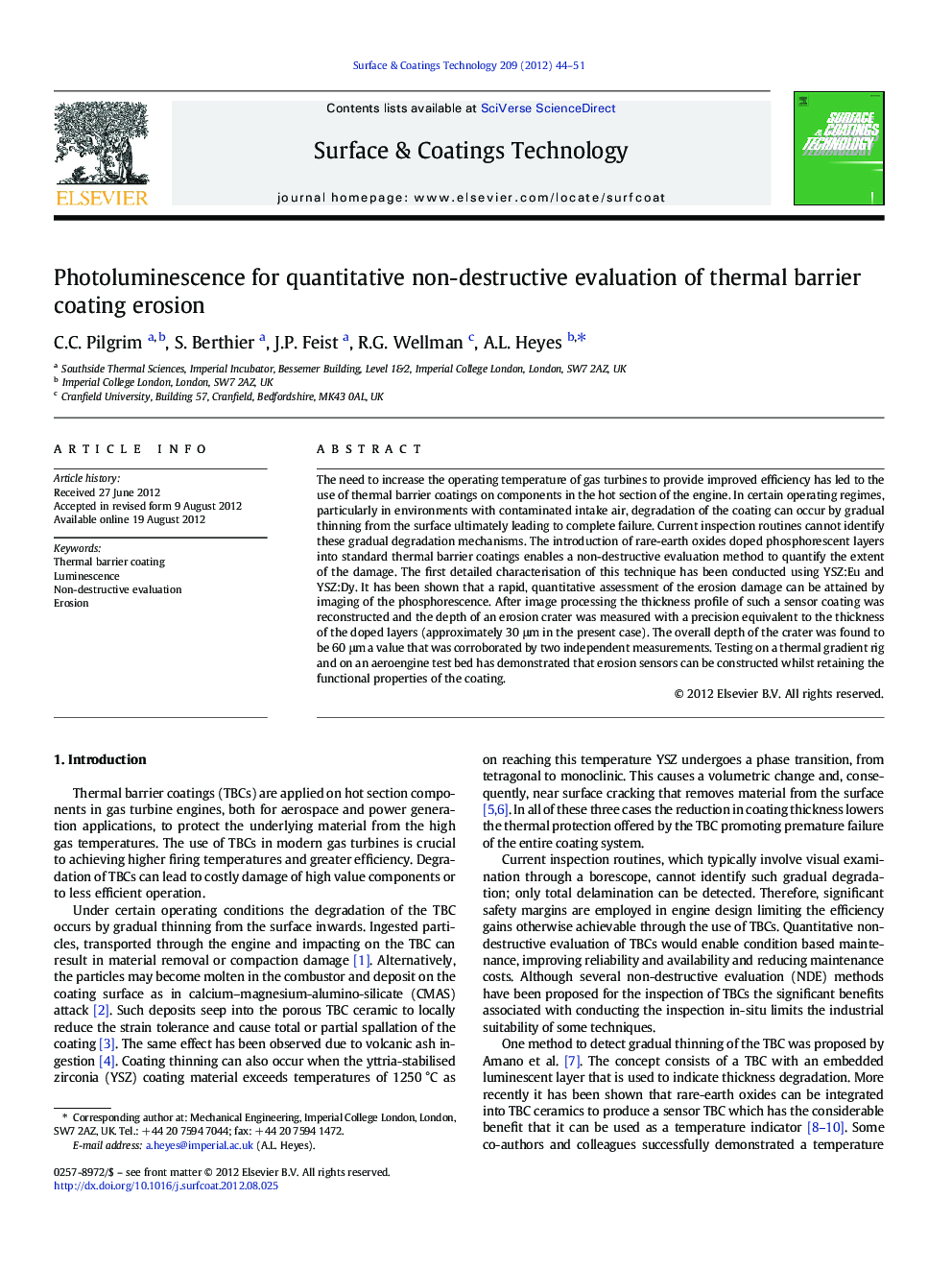| Article ID | Journal | Published Year | Pages | File Type |
|---|---|---|---|---|
| 1658335 | Surface and Coatings Technology | 2012 | 8 Pages |
The need to increase the operating temperature of gas turbines to provide improved efficiency has led to the use of thermal barrier coatings on components in the hot section of the engine. In certain operating regimes, particularly in environments with contaminated intake air, degradation of the coating can occur by gradual thinning from the surface ultimately leading to complete failure. Current inspection routines cannot identify these gradual degradation mechanisms. The introduction of rare-earth oxides doped phosphorescent layers into standard thermal barrier coatings enables a non-destructive evaluation method to quantify the extent of the damage. The first detailed characterisation of this technique has been conducted using YSZ:Eu and YSZ:Dy. It has been shown that a rapid, quantitative assessment of the erosion damage can be attained by imaging of the phosphorescence. After image processing the thickness profile of such a sensor coating was reconstructed and the depth of an erosion crater was measured with a precision equivalent to the thickness of the doped layers (approximately 30 μm in the present case). The overall depth of the crater was found to be 60 μm a value that was corroborated by two independent measurements. Testing on a thermal gradient rig and on an aeroengine test bed has demonstrated that erosion sensors can be constructed whilst retaining the functional properties of the coating.
► Erosion sensor TBC produced with slight modification to industry standard material. ► Extent of erosion mapped and quantified with a resolution of 30 μm. ► Coating phosphorescence excited and imaged using standard equipment. ► Sensor coatings have an equivalent failure response under thermal gradient cycling.
